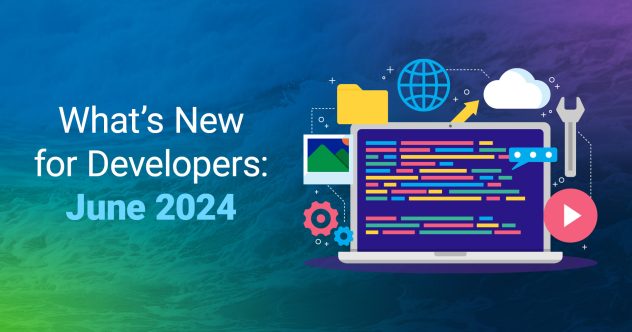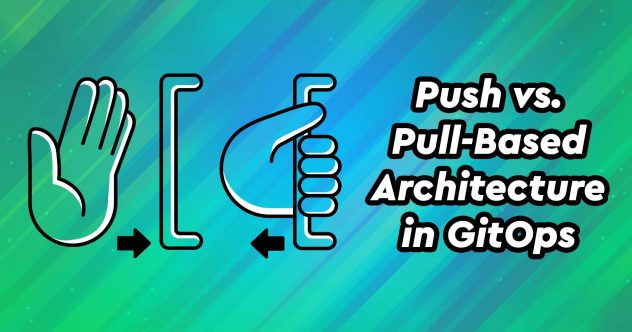Event-Driven Architecture (EDA) is reactive to events or messages and it triggers specific actions rather than relying on direct, synchronous communication. EDA is asynchronous, which allows components to operate independently, improving system responsiveness and performance under variable workloads.
Consider two simple examples: file uploads and new user registration. Both of these operations can happen via synchronous, request-response flow (i.e., REST API), but a new request would need to be made for a status update on the file upload or to trigger the next action to take after the new user data gets inserted into the database. Imagine you have a bunch of task runners continually polling for messages; they work tirelessly through periods of radio silence or unrelated chatter to occasionally get a message they can act on. You can see where this isn’t the most efficient use of the elasticity of on-demand cloud computing resources. EDA resolves this matter with a push-based approach.
Event-driven systems can quickly scale by adding or removing components as needed and can be highly resilient to failures, as the system can continue functioning even if one component is unavailable. EDA also is well-suited for real-time processing and handling large volumes of data, as components can react to events and process data as it arrives without waiting for a complete dataset.
Why Should You Consider EDA?
- Enhanced system flexibility: The loosely coupled nature of an event-driven architecture allows you to easily modify, add, or remove components without affecting the entire system, making it adaptable to changing requirements.
- Improved scalability: EDA supports easy horizontal scaling, allowing businesses to handle increased workloads or traffic by adding more instances of components or services as needed.
- Increased system resiliency: EDA’s asynchronous communication and decoupled components contribute to improved fault tolerance, as the failure of one component does not necessarily cause a system-wide outage.
- Real-time processing capabilities: EDA enables real-time processing of large data volumes and complex event patterns, making it suitable for businesses that require immediate insights or responses to rapidly changing conditions.
- Optimized resource usage: By reacting to events only when they occur, EDA helps optimize resource utilization and reduces the need for continuously running processes, potentially leading to cost savings and improved efficiency.
Cloud Native Serverless Computing
EDA enables application development models like serverless computing, allowing code to be portable and provider agnostic so you can choose your cloud provider based on features, supported language, costs, etc. Functions-as-a-Service (FaaS) is a popular product offered by many cloud providers, which allows users to manage functions and application infrastructure all in one. The cloud provider serves as the responsibility layer by handling the underlying infrastructure, including server provisioning, scaling, and maintenance, allowing developers to focus on writing code.
Familiar FaaS services like AWS Lambda, Azure Functions, and Google Cloud Functions are what we refer to as platform-native. They often lock you into using a specific cloud provider with no easy way to migrate away. You’ll hear us talk a lot about Knative as an open source, Kubernetes-based platform for running serverless, meaning it can scale your application from 0 to N number of replicas within a few seconds. Scaling to 0 is fantastic because it allows Kubernetes and Knative to reallocate resources as needed.
Your one snippet of code can scale resources automatically because it can be invoked several times in parallel. At their core, the platform-native FaaS offerings we mentioned earlier aren’t favorable because of unpredictable pricing. By running Knative on our compute instances via our managed Kubernetes service, you pay one flat and predictable price and don’t have to worry about pay-per-execution pricing that kicks in after some free tiers.
Why Should You Consider Serverless?
- Cost efficiency: Serverless computing pay-as-you-go pricing model can lead to cost savings, as businesses only pay for the compute time they use without allocating resources in advance.
- Improved scalability: Serverless computing can automatically scale resources to match demand, ensuring applications can handle increased workloads without manual intervention or downtime.
- Reduced operational overhead: With serverless computing, the cloud provider manages the underlying infrastructure, freeing IT teams to focus on application development, innovation, and other strategic initiatives.
- Faster time-to-market: The simplified development and deployment processes offered by serverless computing can help businesses accelerate the release of new features, updates, and bug fixes, enhancing their competitive advantage.
- Flexibility and adaptability: Serverless computing allows businesses to build and deploy applications using a variety of programming languages and technologies, making it easier to adapt to changing requirements or incorporate new technologies as needed.
As I mentioned earlier, serverless computing is based on event-driven architecture, meaning that functions get triggered by events such as HTTP requests, file uploads, database updates, and so on. This can help to simplify the application architecture and improve scalability.
Serverless functions also should be stateless. They don’t store any data or state between invocations, ensuring that functions are easily scalable and you can replace them if they fail. They also should be short-lived, ensuring that resources don’t get wasted and the function can scale quickly. If a function’s task is long-running, evaluate whether a constantly running service is a better fit.
Don’t forget to also monitor and log your serverless functions to ensure they’re performing as expected and identify any issues or errors. Use tools like log aggregators and application performance monitoring (APM) tools like Prometheus and Grafana. And don’t forget to secure your functions using best practices such as authentication, authorization, and encryption. This ensures that the application is secure and that sensitive data is protected. Test them thoroughly before deploying them to production to ensure that they work as expected and are free of vulnerabilities.
Serverless computing can be cost-effective, but it’s important to use cost-optimization techniques such as function optimization, resource sharing, and auto-scaling to reduce costs and improve efficiency. Evaluate your workload, usage patterns, and requirements to determine whether serverless computing is cost-effective for your particular use case. Consider expected usage patterns, performance requirements, and the pricing structure of the serverless platform you choose to use.








Comments